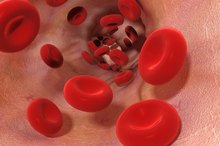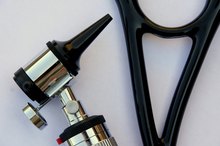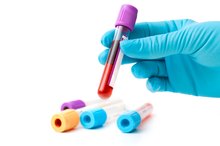Low O2 Saturation When Exercising
Oxygen plays an important role in muscle metabolism, especially during exercise. Low oxygen saturation can slow you down and keep you from performing at your peak. The good news is that the most common causes of low oxygen saturation can be easily corrected through minor changes that you can implement on your own.
Oxygen Saturation
Oxygen is vital to the tissues of your muscles, organs and brain. According to "Harvard Health Publications," when red blood cells pass through your lungs, 95 to 100 percent of them are loaded up, or saturated, with oxygen. The oxygenated blood then flows to your heart to be pumped throughout your body. Your oxygenated blood cells are bright red and change to a bluish color when they are no longer carrying a full load. Low oxygen saturation, a condition known as hypoxemia, is identified as saturation levels below 95 percent.
Oxygen and Exercise
Causes of Low Blood Oxygen Levels
Learn More
During exercise, oxygen enters the mitochondria, often referred to as the power plants of your muscle cells, to produce energy via the breakdown of carbohydrates and fats. When not enough oxygen is available to meet your muscles' demands, your rate of energy production slows down, and you may have to reduce your exercise intensity or stop exercising altogether. Two common factors that can reduce your oxygen saturation during exercise include iron deficiency anemia and poor ventilation.
Anemia and Oxygen Saturation
In your lungs, oxygen molecules bind to hemoglobin, a protein in your red blood cells that your body makes from dietary iron. If you are iron deficient, you may be unable to produce enough hemoglobin, limiting the amount of oxygen that is circulated, a condition known as iron deficiency anemia. In an article by Hegde et al. published in the "Texas Heart Institute Journal," the authors explain that iron deficiency anemia is common and rapidly reversible through iron replacement therapy. According to the IDEA Health and Fitness Association, athletic populations are at a higher risk for anemia due to iron loss through sweat, urine and the gastrointestinal tract. Active women are at an even greater risk due to monthly shedding of red blood cells during menstruation.
Breathing During Exercise
What Is a Normal Oxygen Level for an Adult Female?
Learn More
Failure to breathe deeply and effectively can also contribute to low oxygen saturation during exercise. In a study by Wood and Morton conducted for the Australian Sports Commission, researchers reported that up to 50 percent of elite endurance athletes experienced lowered oxygen saturation during athletic performance. The study found that hyperventilation breathing techniques were effective for eliminating the decrease in oxygen saturation, and that athletes could be trained to breathe more effectively. Breathing rhythmically and deeply during exercise could help reduce your risk of low oxygen saturation.
Related Articles
References
- Austin Community College: Hemoglobin/Oxygen Binding
- Harvard Health Publications: Oxygen Saturation Test
- IDEA Health and Fitness Institute: Iron Deficiency Anemia and Exercise
- Texas Heart Institute Journal: The Cardiomyopathy of Iron Deficiency
- TopEndSports.com: Effect of Hyperventilation on Arterial Oxygen Saturation During Exercise
- University of New Mexico: The Marvelous Mitochondria
Writer Bio
Michelle Matte is an accomplished fitness professional who holds certifications in personal training, pilates, yoga, group exercise and senior fitness. She has developed curricula for personal trainers and group exercise instructors for an international education provider. In her spare time, Matte writes fiction and blogs.









